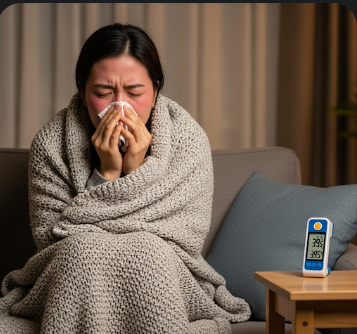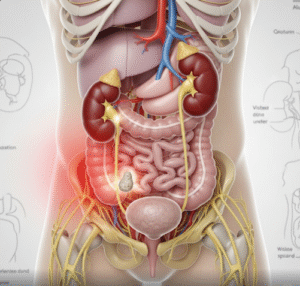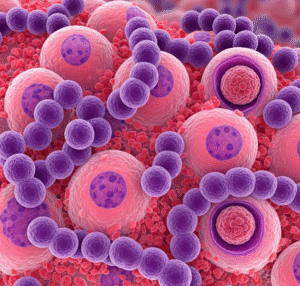Overview
Flu-like symptoms refer to a group of signs and manifestations resembling influenza, including fever, fatigue, muscle aches, headaches, chills, and respiratory discomfort. These symptoms are common in many viral and bacterial infections, not just influenza. While flu-like symptoms are often self-limiting, they may also indicate serious underlying illnesses such as pneumonia, COVID-19, or systemic infections. In Korea, internal medicine, infectious disease, and primary care clinics provide specialized diagnostic testing, symptomatic treatment, and preventive care to manage flu-like illnesses effectively.
Highlights:
➤ Fever, fatigue, muscle aches, and headaches are common indicators
➤ May be caused by influenza, other viral infections, or systemic illnesses
➤ Early evaluation can help prevent complications
Key Facts
➤ Prevalence: Extremely common worldwide, especially during flu season or viral outbreaks
➤ Age affected: Can occur at any age; elderly and immunocompromised individuals are at higher risk of complications
➤ Gender: Affects both males and females equally
➤ Impact: Causes discomfort, fatigue, and reduced daily functioning
➤ Prognosis: Usually resolves within 5–10 days; severe cases require medical evaluation
What are Flu-Like Symptoms?
Flu-like symptoms are nonspecific clinical signs that mimic influenza, typically including:
- Fever or chills – Often sudden in onset
- Fatigue or malaise – Generalized body weakness
- Muscle aches (myalgia) and joint pain – Especially in the back, arms, and legs
- Headache – Ranging from mild to severe
- Respiratory discomfort: Cough, sore throat, and nasal congestion
- Gastrointestinal symptoms: Nausea, vomiting, or diarrhea in some cases
Flu-like symptoms do not confirm influenza alone; they may also appear in COVID-19, mononucleosis, pneumonia, urinary tract infections, and other viral or bacterial illnesses.
Highlights:
➤ Symptom overlap necessitates careful medical evaluation
➤ Presence of fever with systemic symptoms warrants attention
➤ Early recognition improves treatment outcomes
What Symptoms Are Related to Flu-Like Symptoms?
➤ High fever and chills – Often intermittent but may be persistent
➤ Severe fatigue or lethargy – Difficulty performing daily activities
➤ Muscle and joint pain – Myalgia and arthralgia
➤ Headache and body aches – Commonly affecting multiple regions
➤ Sore throat, runny nose, or cough – Respiratory involvement
➤ Gastrointestinal upset: Nausea, vomiting, or diarrhea in some infections
➤ Sweating or chills – Associated with fever spikes
➤ Loss of appetite – Contributing to weakness and dehydration
Highlights:
➣ Symptoms can range from mild discomfort to severe systemic illness
➣ Rapid progression or worsening may indicate serious underlying conditions
What Causes / Possible Causes
➤ Influenza virus: Classic cause of flu-like symptoms
➤ Other viral infections: COVID-19, common cold, adenovirus, respiratory syncytial virus (RSV)
➤ Bacterial infections: Pneumonia, urinary tract infection, sepsis
➤ Chronic conditions: Autoimmune diseases or inflammatory disorders
➤ Medication reactions: Some drugs can cause fever and malaise
➤ Environmental factors: Exposure to cold, excessive exertion, or dehydration
➤ Other systemic illnesses: Malaria, dengue, or mononucleosis
Highlights:
➣ Multiple infectious and non-infectious conditions may produce flu-like symptoms
➣ Proper diagnosis relies on history, physical examination, and laboratory tests
When Should I See My Doctor?
➤ Persistent high fever or chills – Especially above 38.5°C (101.3°F)
➤ Shortness of breath, chest pain, or difficulty breathing
➤ Severe headache, stiff neck, or neurological symptoms
➤ Prolonged fatigue or weakness interfering with daily activities
➤ Underlying chronic conditions – Diabetes, heart disease, or immunosuppression
➤ Symptoms lasting more than a week without improvement
Highlights:
➣ Early consultation at a Korean internal medicine or infectious disease clinic ensures timely intervention
➣ Prevents complications such as pneumonia, dehydration, or systemic infections
Care and Treatment
➤ Rest and hydration: Crucial to support immune response
➤ Over-the-counter medications:
- Fever reducers: Acetaminophen or NSAIDs
- Decongestants or antihistamines: For nasal congestion and sinus discomfort
➤ Symptomatic care: Warm fluids, throat lozenges, and steam inhalation
➤ Medical treatment: - Antivirals: Oseltamivir or other agents for confirmed influenza
- Antibiotics: Only if bacterial infection is identified
➤ Monitoring: Track temperature, hydration status, and progression of symptoms
➤ Preventive measures: Vaccination, hand hygiene, and avoiding close contact during outbreaks
Highlights:
➣ Management focuses on symptom relief, infection control, and preventing complications
➣ Early antiviral therapy improves recovery and reduces transmission risk
Treatment Options in Korea
Medical Treatments:
➤ Internal medicine and infectious disease clinics: Laboratory testing, imaging, and prescription therapy
➤ Symptomatic care: Medications for fever, pain, and congestion
➤ Telemedicine options: Remote consultation for mild cases
Advanced Procedures:
➤ Hospitalization: For severe influenza, pneumonia, or systemic infections
➤ Oxygen therapy: For respiratory compromise
➤ Intravenous fluids and electrolyte management: For dehydration and systemic illness
➤ Follow-up care: Monitoring symptom resolution and preventing recurrence
Rehabilitation & Follow-Up Care:
➤ Education on vaccination, hygiene practices, and early detection of complications
➤ Continuous monitoring of vital signs, symptom progression, and immune recovery
➤ Support for returning to daily activities safely after illness
Highlights:
➣ Korean clinics provide advanced diagnostics, individualized therapy, and comprehensive follow-up
➣ Early intervention ensures faster recovery, reduced complications, and improved quality of life













